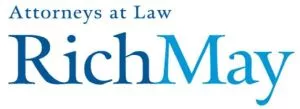As this blog has covered previously, Congress approved new investments in clean energy at an unprecedented scale in November 2021's Infrastructure Investment and Jobs Act ("IIJA") and August 2022's Inflation Reduction Act ("IRA"). These laws expanded or created dozens of tax incentives and grant programs to support investment in established renewable energy technologies, like solar and wind, and in technologies earlier in the adoption curve, like hydrogen and carbon capture & sequestration. While the IIJA and IRA reflect Congress's intent to turbocharge the growth of clean energy, Congress left many critical implementation details up to the federal agencies, state governments, and public and private sector stakeholders.
A case in point is the Greenhouse Gas Reduction Fund, a $27 billion program authorized by the IRA and administered by the Environmental Protection Agency. EPA moved deliberately to launch the three distinct programs of the GGRF: the National Clean Investment Fund, the Clean Communities Investment Accelerator, and the Solar for All competition, which aims to unlock access to solar energy in low-income communities. In recent weeks, GGRF implementation activities have intensified as EPA formally announced program rules and set application deadlines. The action is now shifting to states and other applicants.
With complex application requirements and rapidly approaching deadlines, well-prepared applicants will have the advantage in pursuing GGRF funds. For example, on June 28, EPA formally opened a competitive application process for the $7 billion in the Solar for All program, with the primary category of applicants—state governments—given just over a month to submit notices of intent. While nearly all states met this deadline, they now have until only September 26 to submit completed applications. (Tribal governments, territories, municipalities, and non-profits are also eligible to apply to the Solar for All program, but as EPA has indicated its intent to award the funds to only 60 grantees, it appears likely that there will be roughly one awardee per state and that credible proposals from state governments will have an advantage.)
This has led to an accelerated stakeholder process in states like Massachusetts with a robust clean energy industry and proactive regulators. On August 11, the Department of Energy Resources ("DOER") released a "straw proposal" for the Commonwealth's application, with stakeholder feedback preferably requested within a week and no later than August 25. To its credit, DOER's proposal is comprehensive, if necessarily limited in detail at this early date. DOER proposes to apply for an ambitious $400 million to allocate across programs tailored to different low-income housing stock in the house. The straw proposal would:
- Revive a version of the Mass Solar Loan program, offering zero interest loans to low-income homeowners through interest rate buy downs with participating lenders;
- Launch a competitive RFP for solar developers who would lease solar systems to homeowners and landlords;
- Create financing mechanisms to facilitate solar developments benefiting public housing authorities;
- Extend forgivable loans to privately owned affordable housing; and
- Enhance existing community solar projects for the benefit of low-income communities.
DOER's proposal also reflects careful thinking about how to integrate Solar for All funds with other funding sources aimed at decarbonizing the built environment. The proposals to partner with solar developers and affordable housing developers would leverage the Investment Tax Credit (26 USC § 48), which the IRA reauthorized at up to 30% of project costs for residential-scale solar projects. (Moreover, the ITC also offers 10% bonus credits to projects that meet criteria related to domestic content and siting in low-income communities, as most Solar for All projects presumably would be.) The subsidized lending proposals will build on the Commonwealth's successful experience with the Mass Save® HEAT Loan and Mass Solar Loan program, as well as the nascent Massachusetts Climate Bank, which will seek funds from another tranche of GGRF funds. Creative work to pair these residential solar funds with existing programs promoting affordable housing and energy efficient buildings, like Mass Save, also lies ahead—the Cape Light Compact's Cape and Vineyard Electrification Offering, which bundles efficiency, residential solar, and residential batteries, is a prime example.
Moreover, using the Solar for All funds effectively and in coordination with existing programs will advance the Commonwealth's ambitious targets for solar generation, as recently highlighted by another DOER project, the Technical Potential of Solar Study. This geospatial analysis of potential solar sites in Massachusetts identified over 150 GW of siting capacity on "highly suitable" locations, including rooftops, parking lot canopies, and small and large ground-mounted sites. This represents roughly 5 times the amount of solar capacity required to meet targets in the Massachusetts Clean Energy and Climate Plan for 2050 and roughly 50 times the existing installed solar capacity in the state—in sum, there is ample space to meet the Commonwealth's solar energy targets, and with funding from the Investment Tax Credit and the Solar for All program, robust financial support to do so.
Notwithstanding these rapid developments, both federal and state agencies have many open questions to resolve, and market participants are only just starting to make use of the enhanced tax incentives and grant programs. Rich May attorneys look forward to continue working with clients who are developing projects to take advantage of the new clean energy incentives made available by the IIJA and IRA. Reach out to us if we can assist with developing your project or guide you in engaging with the regulators designing these significant programs.
The content of this article is intended to provide a general guide to the subject matter. Specialist advice should be sought about your specific circumstances.


